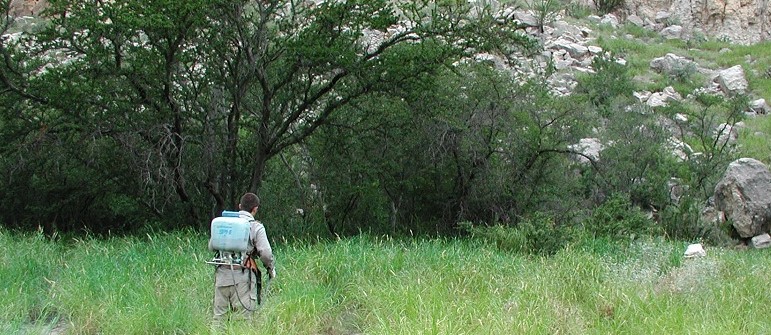News Release
You are viewing ARCHIVED content published online before January 20, 2025.
Please note that this content is NOT UPDATED, and links may not work. For current information,
visit https://www.nps.gov/aboutus/news/index.htm.

|
Subscribe
|
Contact: Raymond Skiles, 432-477-1145
The National Park Service (NPS) requests public comments on a plan to manage exotic, non-native plants in Big Bend National Park (Park). The 30-day review and comment period for the park’s Exotic Plant Management Plan and Environmental Assessment begins September 7, and continues through October 6, 2018.The National Park Service proposes to manage high-priority exotic plant species that have invaded the park and are causing substantial damage to natural and cultural resources and the visitor experience. Priority exotic plants include giant cane, saltcedar, buffelgrass, Lehman’s lovegrass, K-R Bluestem, and Maltese star-thistle. These plants were introduced to the region, both accidentally and purposefully, at various times during the 20th century.
Giant cane and saltcedar have invaded the Rio Grande floodplain and surround other Park water sources. They displace native species and alter stream channels and banks. Buffelgrass, Lehman’s lovegrass, and K-R bluestem occupy otherwise sparsely vegetated desert expanses, creating fire hazards that threaten native desert plants. In the park’s middle elevations they displace native grasses. Exotic plants thrive in disturbed soils, thus increasing the threat of wildfire to park developments and historic sites.
To control priority exotic plant populations, the plan calls for: strategic use of herbicides (applied manually, from motor vehicles along roads, and under select circumstances from aircraft); mechanical removal (using manual and mechanical methods); and prescribed fire. Selective biological control (combating one exotic species with another) could be used after additional analysis. These methods could be applied alone or in combination.
The environmental assessment considers two alternatives: no-action, which would allow continued and increasing impacts from exotic plants on the park’s natural and cultural resources and the visitor experience; and the proposed action alternative.
The Plan and Environmental Assessment are being prepared in compliance with the National Environmental Policy Act to provide a decision-making framework that 1) explores a reasonable range of alternatives to meet project objectives; 2) evaluates potential issues and impacts to park resources and values; 3) identifies measures to lessen the degree or extent of these impacts; and 4) describes an approach and methods for exotic plant management over the long-term.
The plan is available for review and download at the National Park Service Planning, Environment and Public Comment web site, http://parkplanning.nps.gov/bibe. The NPS prefers comments be submitted in writing on the same site. However, comments may be submitted by email to: bibe_planning@nps.gov, by mail to:
Superintendent
PO Box 129
Big Bend National Park, TX 79834-0129
or in writing at public meetings.
The public, organizations, and others are invited to submit written comments throughout the 30-day period, September 7 through October 6, 2018.
Comments submitted during this public review period will be considered by the NPS prior to finalizing the Plan and Environmental Assessment.
Last updated: September 4, 2018
